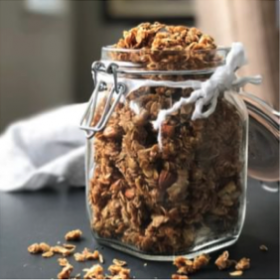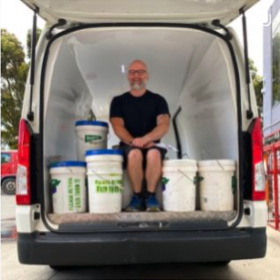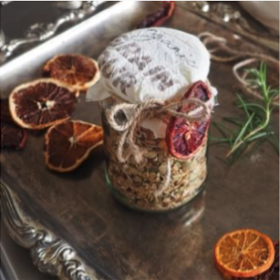The other day rummaging through the fridge looking for leftovers to take to work I come across a small tupperware container holding two lonely pieces of cooked cauliflower. Not recognising it from recent meals I hold up the container to Peta, my wife.
“What’s this?” I ask.
“That’s cauliflower,” she replies casually.
“Cauliflower?”
“Yeah, cauliflower.”
“Where’d it come from?”
“The fridge.”
“That old one at the bottom?”
“Yeah, that one.”
I bite into a piece, it tastes really good, even cold.
“How’d you cook it?”
“Roasted.”
“Roasted?”
“With oil and salt.”
“When was that?”
“Yesterday, for lunch.”
“You don’t usually like cauliflower?”
“No, I usually don’t.”
“There’s not much left?”
“No, there isn’t.”
“Hmmm,” I say.
On hearing Peta’s story I feel several distinct emotions – firstly joy that a vegetable in danger of being thrown out has been rescued (generally at the bottom of veggie crisper you will find an old cauliflower accompanied by a few soft beetroot destined to be thrown out). Second there’s satisfaction; that by eating almost a whole cauliflower (which previously she didn’t enjoy) in a single sitting, my partner of many years still has the capacity to surprise me . And lastly there is melancholy (sorry, no pun intended), as I remember back to my childhood and the trauma of gagging down my over-boiled cauliflower before being allowed to leave the table (if only we’d known you could actually make cauliflower delicious, think of all the time, distress and cauliflower we’d have saved).
Like most important facts – food waste facts are alarming. In Australia we throw out a lot of food – every year about 350kgs per household – which is the equivalent to an average wooden power pole or a third of a small car like an Hyundai i30. The biggest subset in the food waste picture is fresh fruit and veg, and at an educated guess I’d say the biggest subset of the fruit and veg subset would have to be cauliflower. But it’s not just the wastefulness part of food waste and all the landfilling etc that gets me most, it’s all the effort the cauliflower farmers, distributers, and retailers put into growing, picking, packing, transporting, refrigerating, displaying and packing again – all for nought. It’s a kind of daily tragedy.
But if, we can find ways to stretch our thinking, to look beyond what we think we like, to surprise ourselves and our significant others and make previously unloved food not just edible but delicious, then we’re part of the way to reducing our annual food waste to far lower equivalent weights – down from a third of an i30 to perhaps one of those Dutch Electric bikes, that are a bit heavier than a normal bike. Small things, always the small things.



